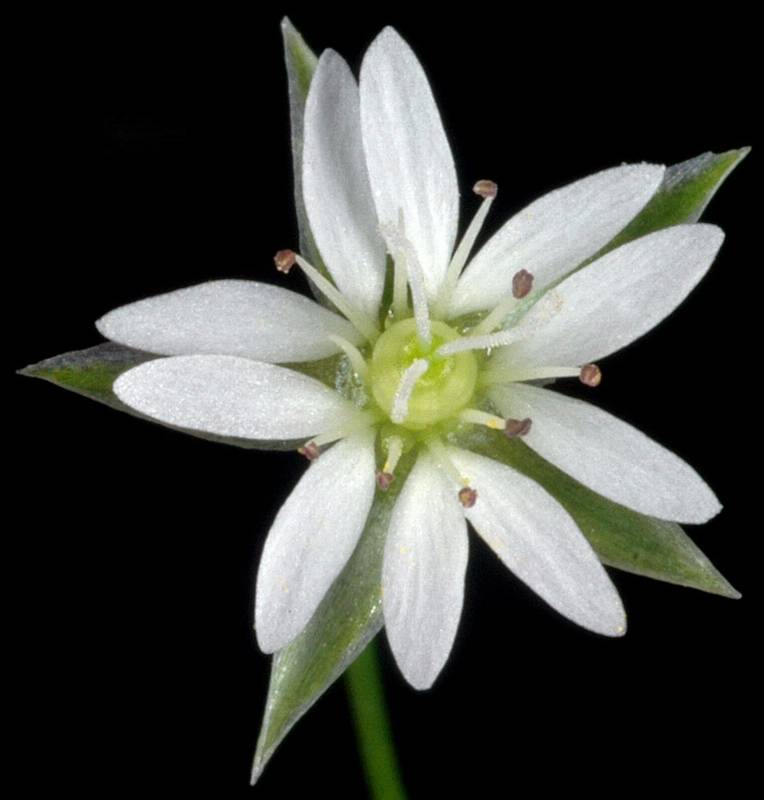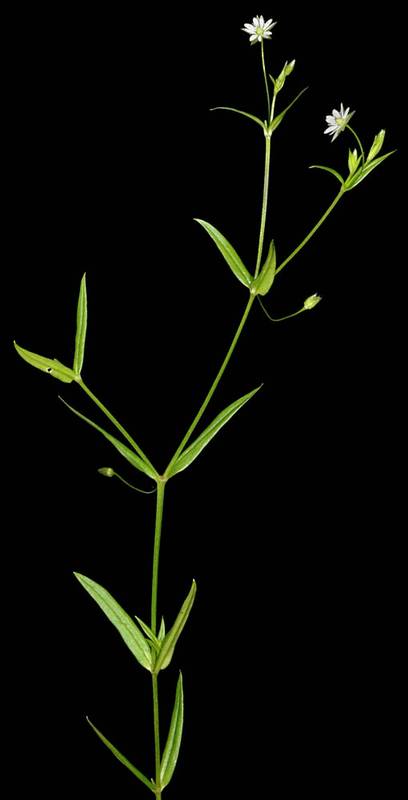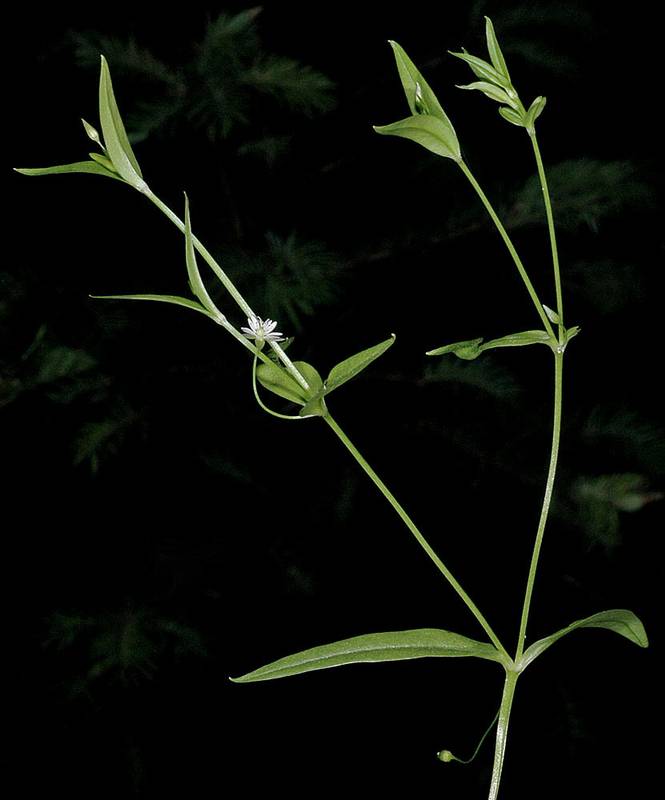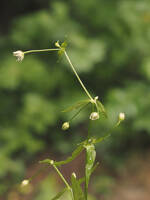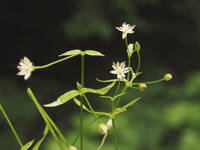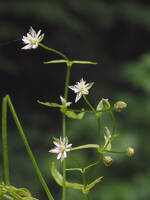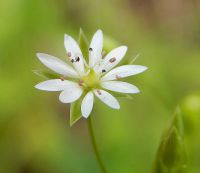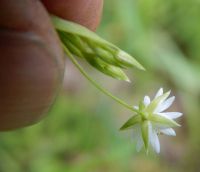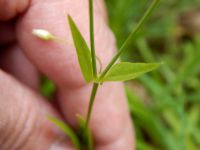Distribution: Occurring on both sides of the Cascades crest in Washington; Alaska to California, east to the Rocky Mountains, northern Great Plains, Great Lakes Region, and northeastern North America.
Habitat: Moist or marshy areas from low elevations to middle elevations in the mountains.
Flowers: May-August
Origin: Native
Growth Duration: Perennial
Conservation Status: Not of concern
Pollination: Bees, flies
Low, glabrous, matted perennial, the slender stems prostate to erect, 1-4 dm. long.
Leaves opposite, sessile, entire, ovate to narrowly lanceolate, 10-50 mm. long and 3-10 times as long as broad.
Flowers axillary and in terminal leafy-bracteate cymes; pedicles slender, glabrous, 1-4 cm. long, erect to reflexed; sepals 5, distinct, lanceolate, acute, scarious-margined, 3-nerved, 2.5-4.5 mm. long; petals 5, white, deeply notched, from nearly as long as the sepals to wanting; stamens 10; styles 3.
Capsules narrowly ovoid, about twice as long as the sepals.
Publication: Fl. Boston., ed. 2. 182. 1824.
-
ssp. borealis – boreal starwort
 Occurring on both sides of the Cascades crest in Washington; Alaska to California, east to the Rocky Mountains, northern Great Plains, Great Lakes Region, and northeastern North America.
Occurring on both sides of the Cascades crest in Washington; Alaska to California, east to the Rocky Mountains, northern Great Plains, Great Lakes Region, and northeastern North America.
PNW Herbaria: Specimen records of Stellaria borealis in the Consortium of Pacific Northwest Herbaria database
WA Flora Checklist: Stellaria borealis checklist entry
OregonFlora: Stellaria borealis information
E-Flora BC: Stellaria borealis atlas page
CalPhotos: Stellaria borealis photos

